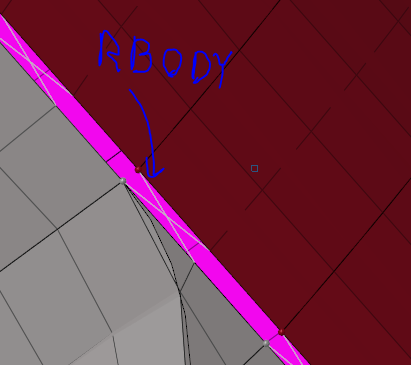Hi,
For the model info please see attached. If you run the .h3d, you will notice there are SPH particles falling through the side of the hopper car. This is because I have RBODYs connecting the side walls to the floor, acting as MPCs, as shown in the picture. Although I understand the physics are definitely very messed up, considering that I have only some 50 SPH particles each weighing hundreds of kg, my main concern right now is to prevent these particles from falling through the edges on the side. Using shell elements in that region results in very high aspect ratio elements, increasing my minimum timestep by a factor of 10.
Can anyone advise how to 'seal' this region off so that it acts as a wall, preventing SPH particles from passing through without the use of shell elements?
Thanks in advance!

Unable to find an attachment - read this blog